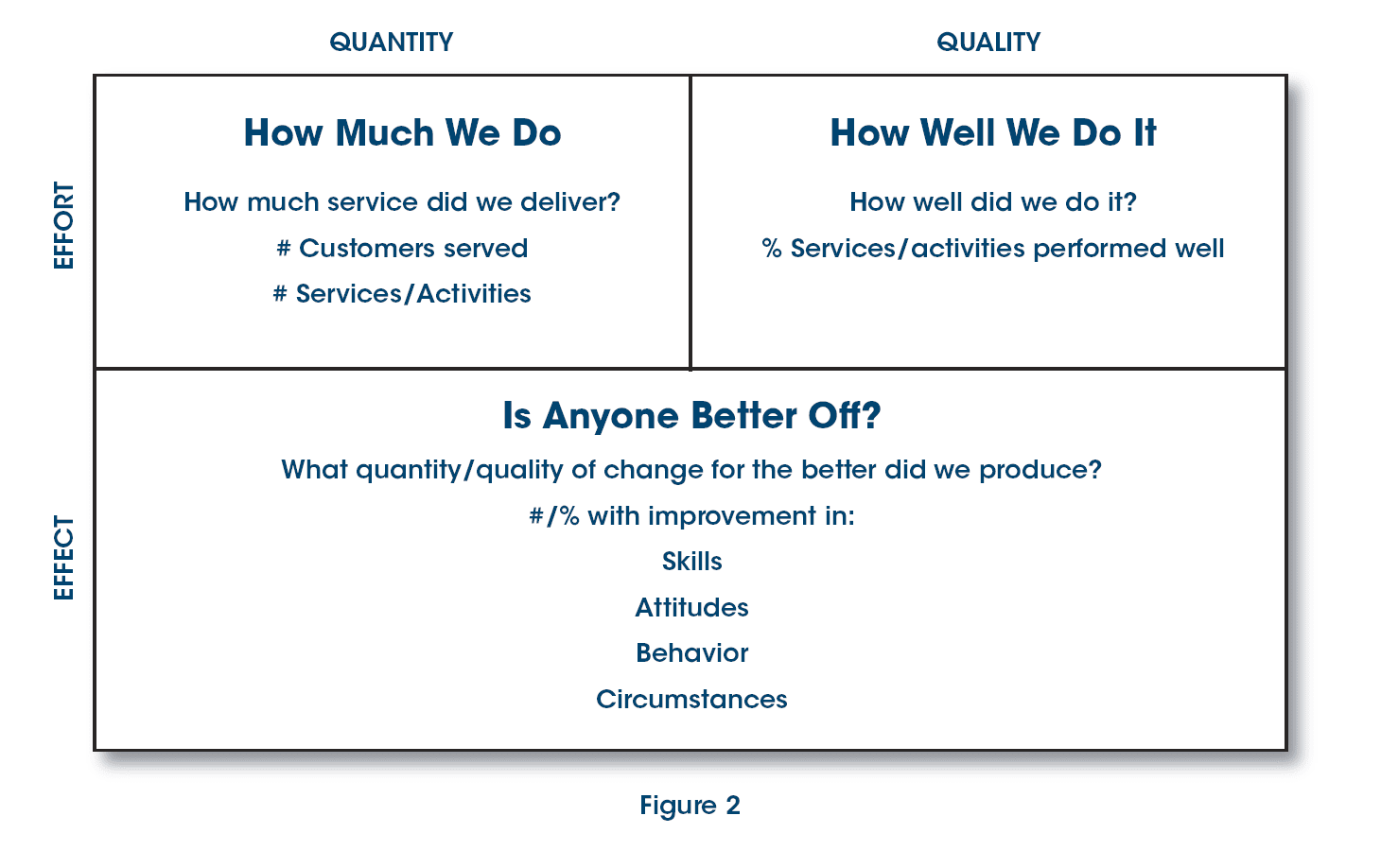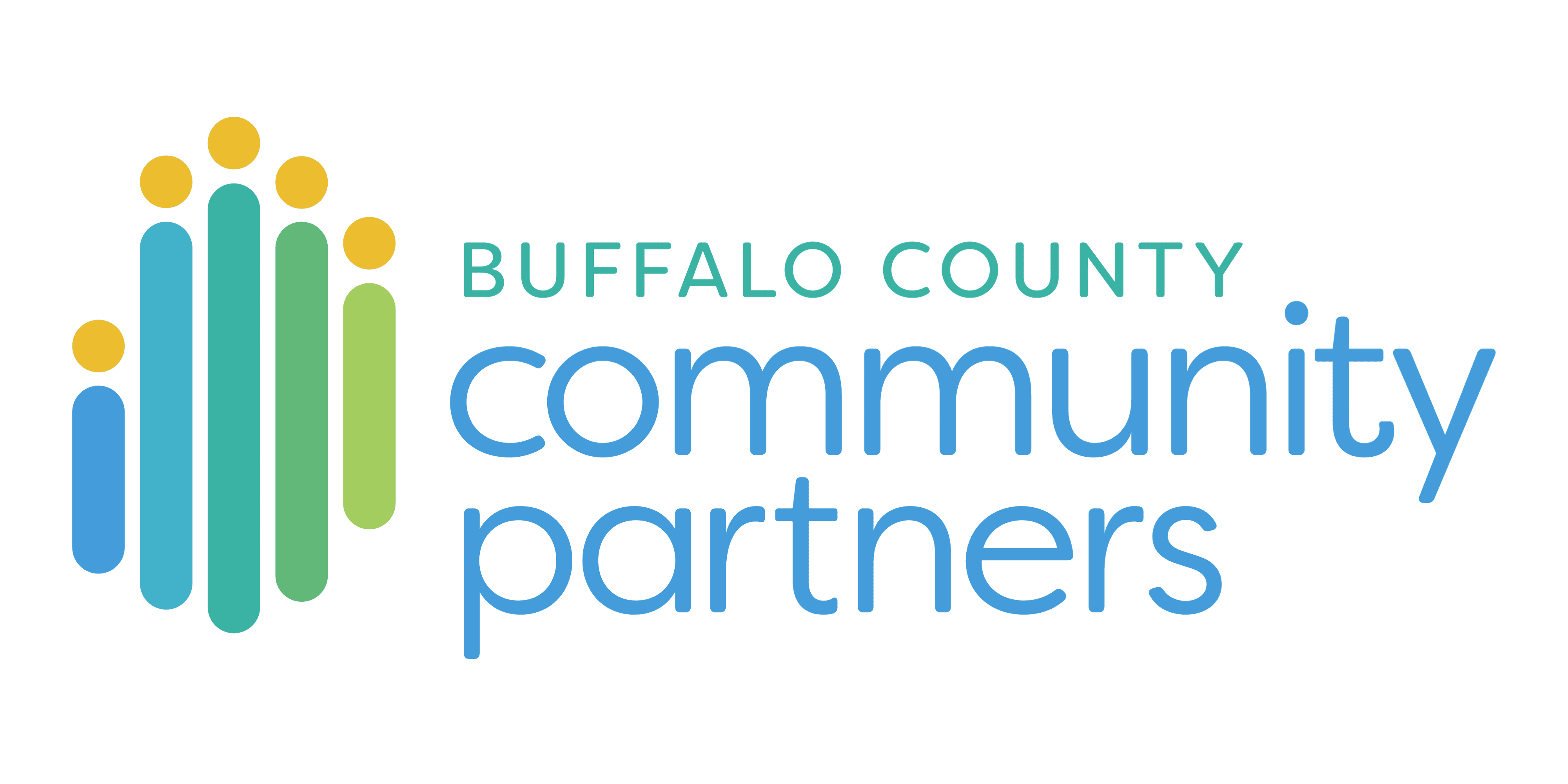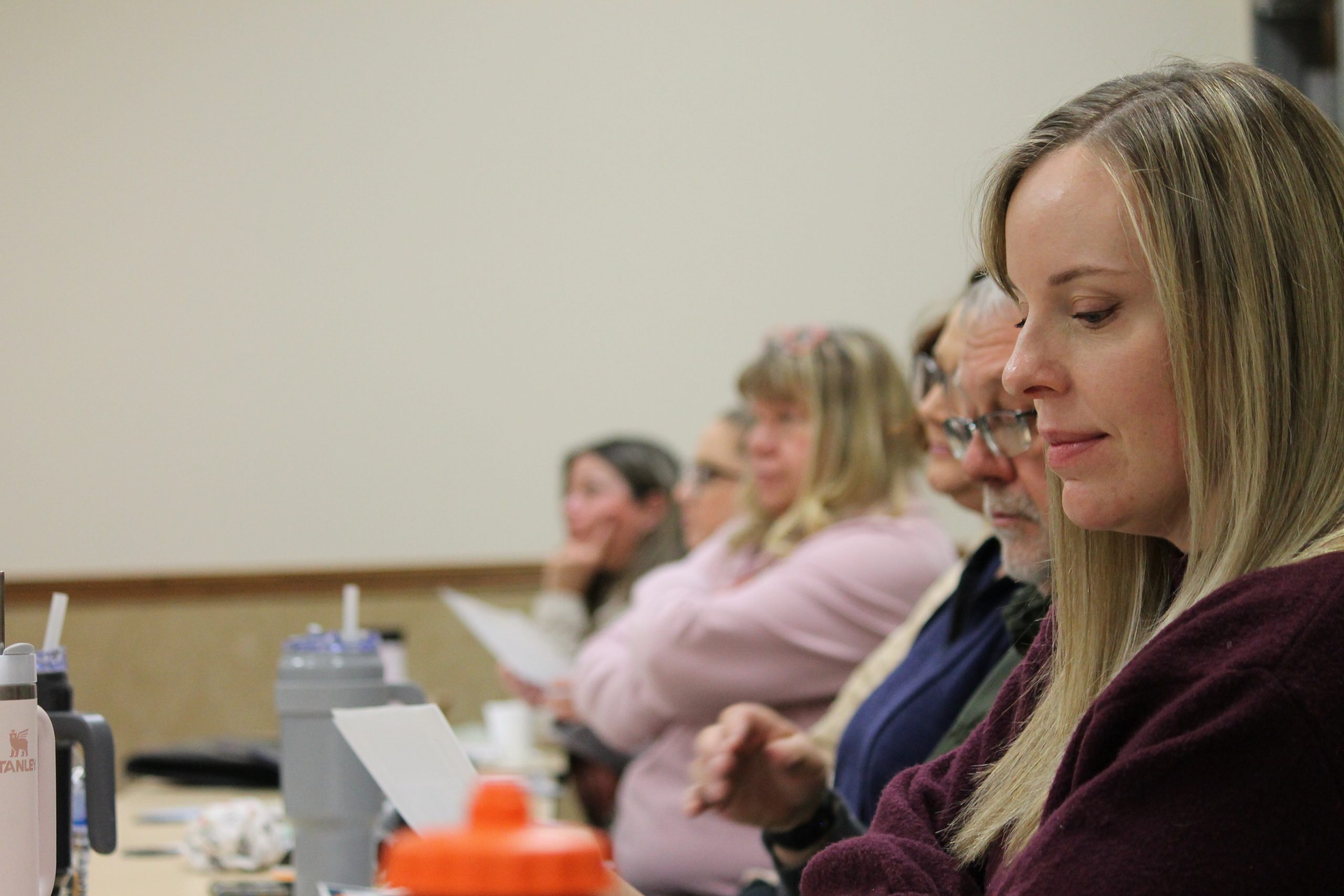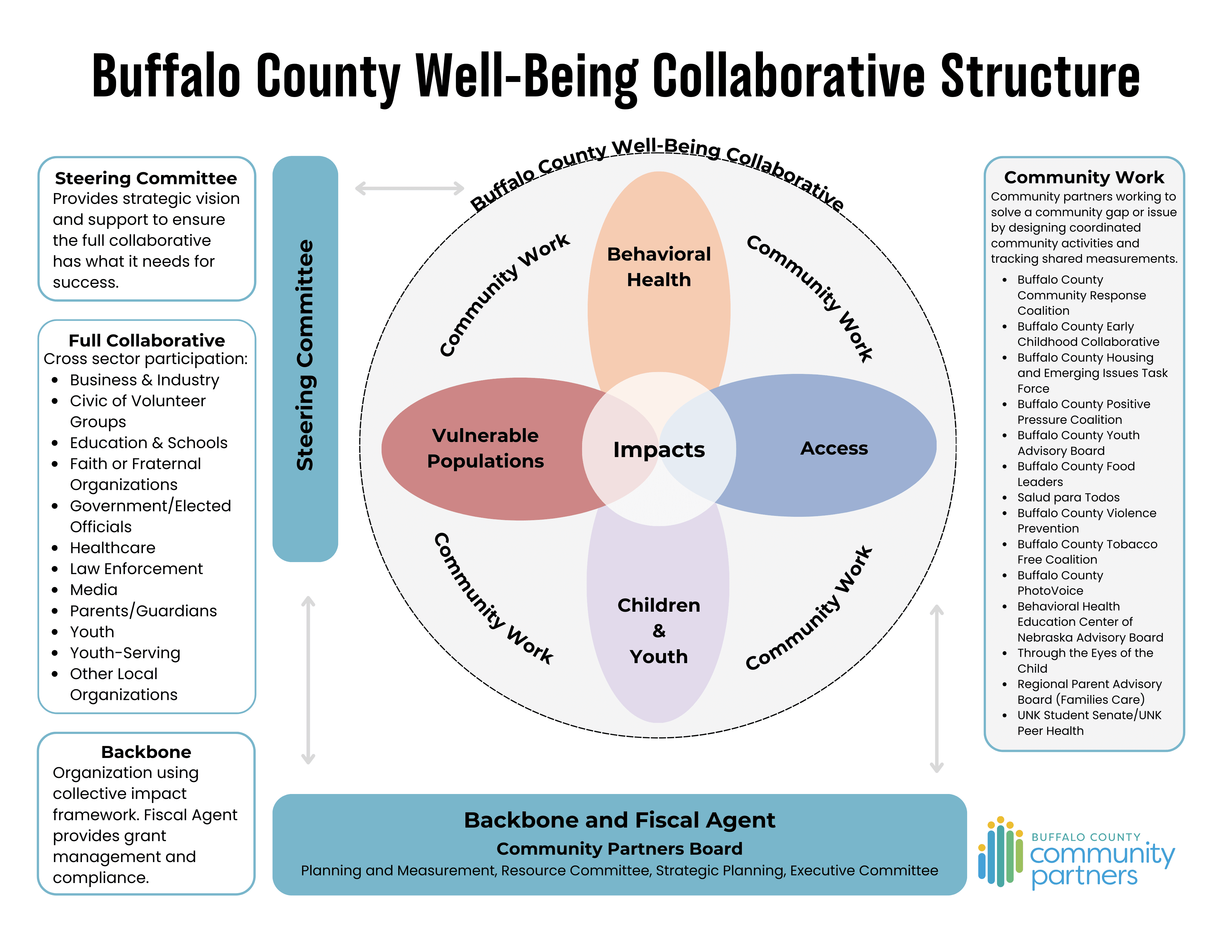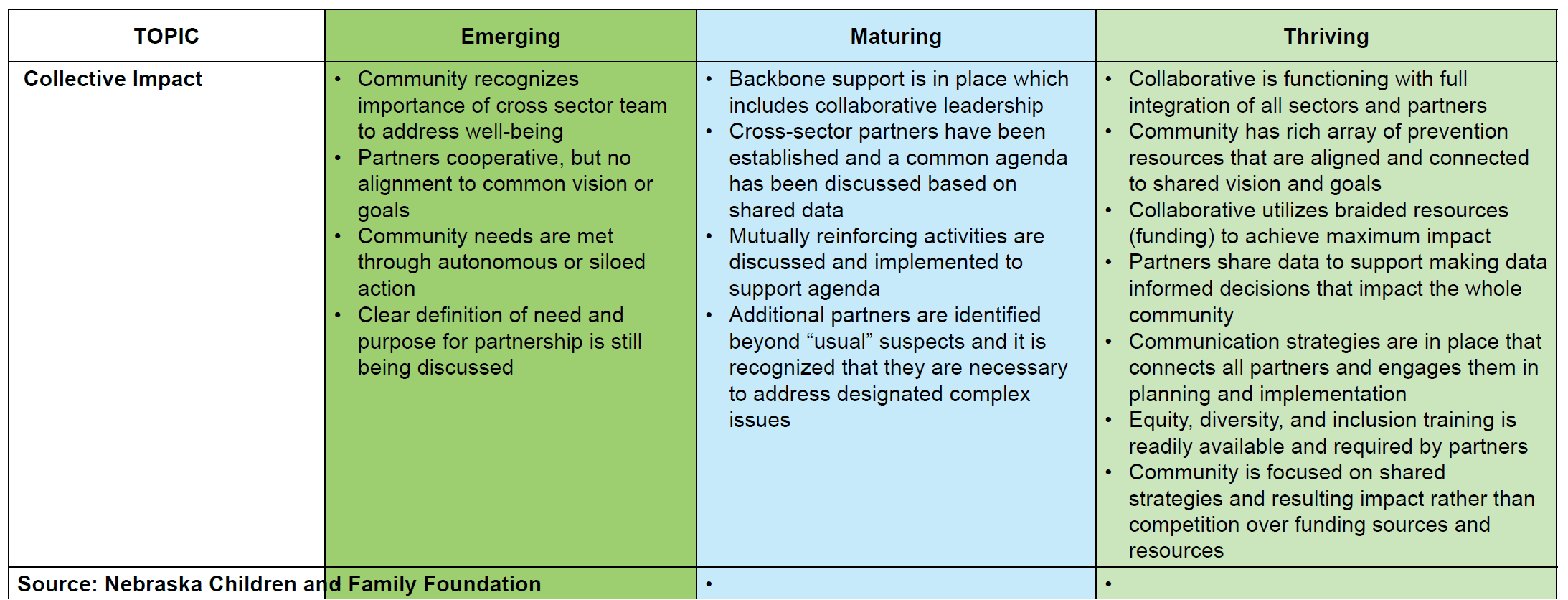Buffalo County 2030 Vision
The Buffalo County 2030 Vision is a plan to build a healthier Buffalo County. By 2030, Buffalo County will have communities that; have resources that are easy to understand and accessible for all, access to basic services for all, thrive when partners work together to coordinate services and will value all people, and their voices will inform our work. Learn more below about the partners, structure, and models in your community to achieve the Buffalo County 2030 vision.
Well-Being Collaborative
Buffalo County Well-being Collaborative is a collection of community partners representing cross-sector participation including those with lived experience that come together to share interests, resources, time, and expertise in order to achieve larger impact or common purpose. Building collective impact around shared agendas, shared visions, and shared measurements. Gatherings are open to the public, embrace diversity, inclusive, and equitable of all people.
Purpose
Why does this collaborative exist? To create impact in our community. These two impact statements focus work in the community.
- Increase Access to Information, Resources, Skill Development, Programs and Services.
- Prevent persons across the lifespan from entering systems due to issues, challenges or problems that are preventable.
Community Work
These are groups gathering data, working on prevention, and informing the collaborative on implementation in community work.
Are you interested in working collaboratively with our community groups? Join A Group
Steering Committee
Steering Committee
The Steering Committee works in partnership with the Collaborative on the community strategic plan (Buffalo County 2030 Vision), engage partners, discern priority work, and co-design work with the backbone and community organizations.
Steering Committee Leadership: Abby Olson, CHI Health Good Samaritan; Coelette Gruber, City of Kearney; Jamie Legates, Families Care; Jon Watts, University of Nebraska at Kearney; Kathy Gifford, Kearney Public Schools; Ken Shaffer, Retired Physician; Diane Duffin, University of Nebraska at Kearney; Jeff Schwarz, director of student safety, Kearney Public School; Jason Sharp, director, Rooted and Edward Jones; and Adie Johnson, Chaplain, CHI Health.
Partners Involved
The Well-being Collaborative is made of over +100 community partners. We have partners from12 different community sectors represented. List of Collaborative Member
Foundations of Well-Being Collaborative
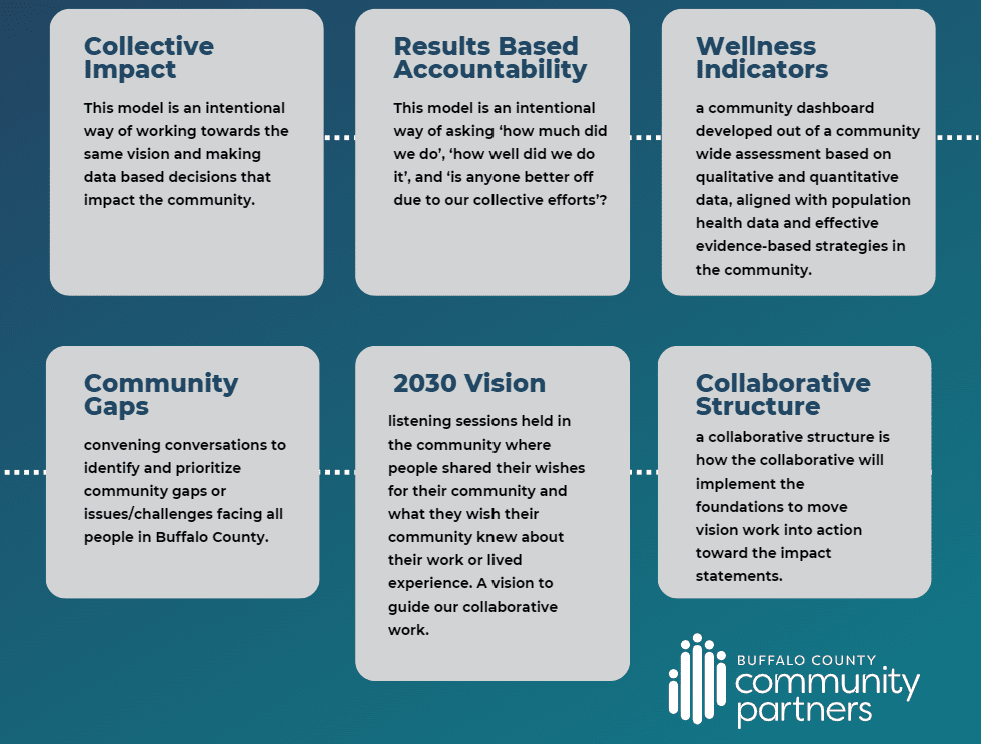
Community Data: The Baseline
A 2030 Steering Committee compiled community data and shared with over 60+ community stakeholders. They asked stakeholders to review the data and share what they hoped could change in the community.
The data was segmented into four areas, called performance indicators; behavioral health, early childhood/adolescents, access (to basic services), and vulnerable person(s). This work became the Community Health and Well-Being Indicators document. *View full data document here*
The Steering Committee also began compiling a list of identified gaps and barriers that exist in our community.
Together the baseline data, community gaps and barriers, and community hopes inspired the vision statements.
Behavioral and Physical Wellness
By focusing on wellness of your communities’ residents we will see improved behavioral and physical health for all.
Access to Basic Services
By improving access for all in your community we will see a reduction in health disparities.
Early Childhood and Adolescents
By focusing on the development of children’s skills to set goals and maintain healthy relationships, and manage their emotions they will become thriving adults.
Vulnerable Persons
By lifting up the voices and needs of the vulnerable populations in our community we will create a safe and healthy place for all.
Collective Impact
Buffalo County Community Partners has decided to use the collective impact model to create change. Too many times, communities focus on isolated impact to solve complex issues. Moving from isolated impact to Collective Impact involves helping partners to;
- Point to a shared agenda,
- Know how to connect,
- See many sectors involved,
- Know the benefits when issues are solved together,
- Give voice to those being served,
- See work through others perspective,
- Give space for others to join conversations,
- Celebrate success together and for each other.
Measuring Impact
Results Based Accountability
Buffalo County Community Partners has adopted the Results Based Accountability Model to lead community conversations around impact and reaching our intended result.
Instead of measuring just outcomes, result based accountability relies on three questions. The main question we are trying to answer “is anyone better off,” shifts the focus to impact rather than just outcomes.
- How much we do
- How well we do it
- Is anyone better off
